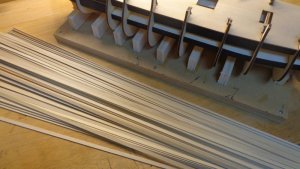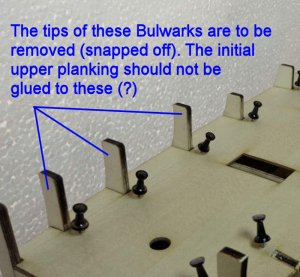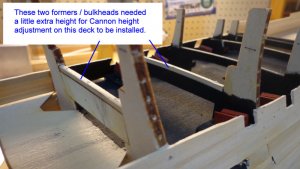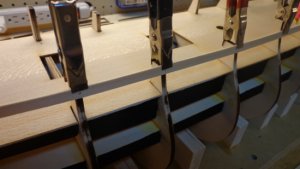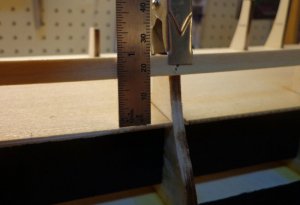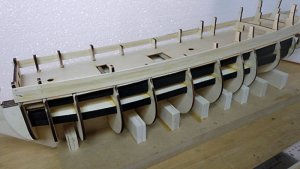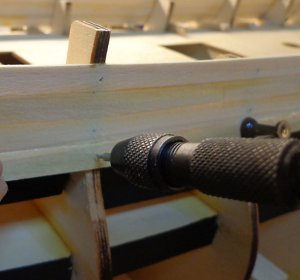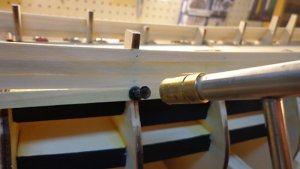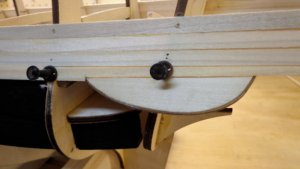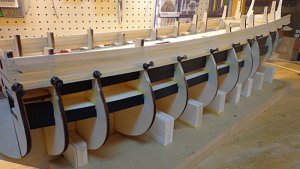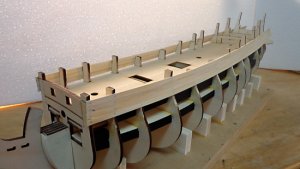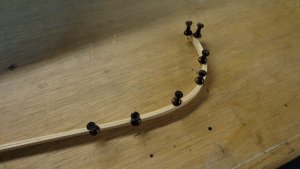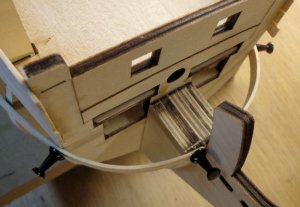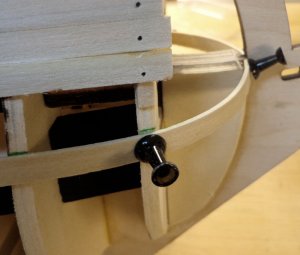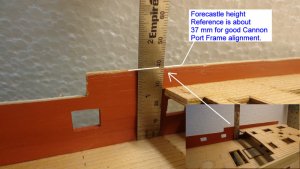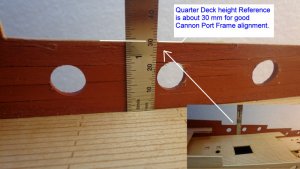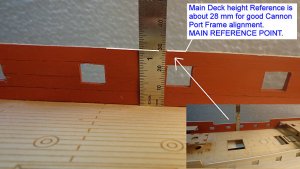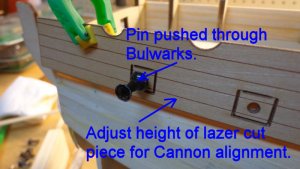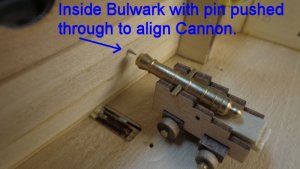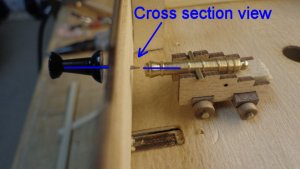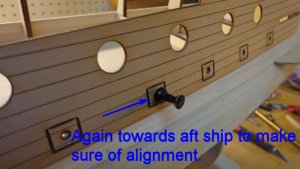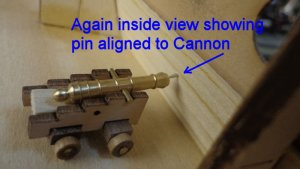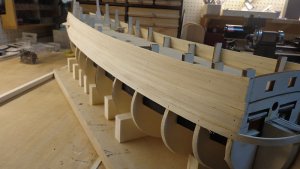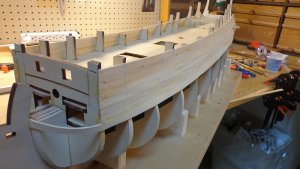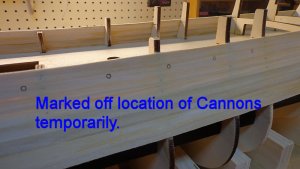Gluing up the False Deck and preparing to start the upper initial Planking. Lime Strips 1.5 x 7 x 800 mm are given for this. From the tips of the Bulwarks sticking up to about the wales is the stopping point, then the Decking and upper decking will be added later.
There is one part that I am not too sure about. (See the second image)
The planking that runs from the wales up to the tips of the Bulwarks obviously will be glued up, however, will there be any glue on the sides of the tips of Bulkwarks since these parts are going to be removed anyway. This is something I am going to have to figure out. Seems logical that there would be *no* glue here as then it
would be nearly impossible to break free the tips.
There is one part that I am not too sure about. (See the second image)
The planking that runs from the wales up to the tips of the Bulwarks obviously will be glued up, however, will there be any glue on the sides of the tips of Bulkwarks since these parts are going to be removed anyway. This is something I am going to have to figure out. Seems logical that there would be *no* glue here as then it
would be nearly impossible to break free the tips.
Last edited:


